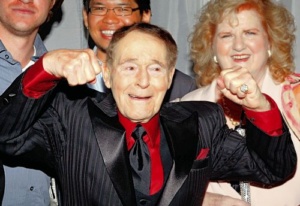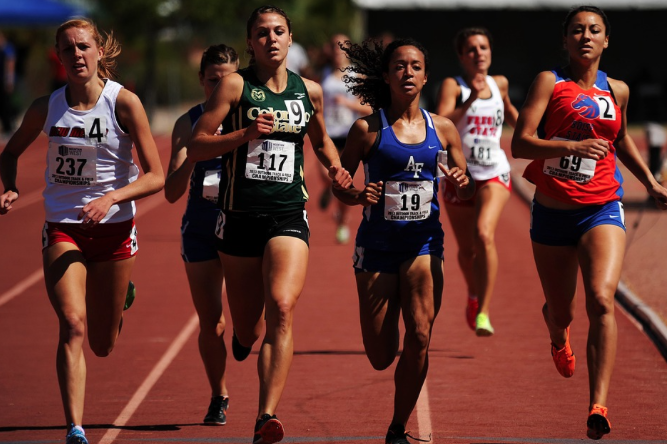 Vegetables are the best food on earth. A magical food group, if there ever was one. It doesn’t matter if you want to burn more fat, build muscle, or improve your overall health, consuming more vegetables on a daily basis will make a dramatic difference. How many foods can you say that about?
Vegetables are the best food on earth. A magical food group, if there ever was one. It doesn’t matter if you want to burn more fat, build muscle, or improve your overall health, consuming more vegetables on a daily basis will make a dramatic difference. How many foods can you say that about?
To stay lean and healthy, I can sum up a lifelong nutritional strategy in one sentence: consume vegetables all day long with some lean protein. Veggies reduce inflammation, fight cancer and every disease, and they’re loaded with nutrients your body needs to keep your good hormones up and bad hormones down.
But there’s a problem: I despise eating vegetables. Sure, I wave a big ol’ veggie flag because my clients’ results depend on eating plenty of them, but in my own life I’ll freely admit that my intake is woefully inadequate. So I recently took it upon myself to change my ways.
You see, I don’t despise vegetables for the typical reasons. The taste and texture don’t bother me. In fact, I can’t think of a vegetable that I wouldn’t eat. But I never eat enough of them because, well…they take too long to eat. Heck, I enjoy steamed broccoli, but put a big bowl of it in front of me and the first thing that comes to mind is: I should be working on an article or answering emails or cleaning my office. Also, my body needs a lot of calories. So if I’m going to take the time to eat a meal I better get everything I need: plenty of protein, healthy fat, and some carbs.
Now, the fact that cruciferous vegetables take so long to consume is one of the many reasons why they’re so great for burning fat and improving gut health. When you eat slowly it gives your gut time to send a signal to your brain that you’re getting full. And eating slowly improves gut health because it allows your body plenty of time to release digestive enzymes. Chewing thoroughly is an essential component of overall health, and you definitely can’t eat a bowl of broccoli quickly.
I knew all this, of course, but it didn’t matter. I still wouldn’t eat them in any quantity that’s sufficient.
This spring and summer were hectic as hell for me. I devoted virtually all of my time to work projects instead of running by the ocean or training on the rings at Santa Monica beach. And I could feel the toll it was taking on my body. My digestive health wasn’t up to par, even though I always take HCl with every meal. My energy was low, even though I eat plenty of berries and lean protein. And I was having trouble concentrating, even though I take a handful of herbs and vitamins each day. I needed to make a dramatic change fast, so I decided to do a vegetable juice fast, just for kicks. Now, it wasn’t a “fast” in the strictest sense of the word, but it was damn close – especially for a guy like me who lives to eat all day long. If I wasn’t going to eat veggies, then was just gonna drink the damn things.
I know what fasting does for body, both good and bad, but I had to give it a shot because the potential negatives weren’t important to me at this point in my life. There only two not-so-cool side effects of short-term fasting: it’ll impede strength and muscle growth. No guy ever got big or strong by starving himself. But I wasn’t looking to get bigger or stronger, I just wanted to feel better and give my organs a break. Plus, I’d been studying up on fasting for the last year and I wanted to experience the adventure myself. I’ll never recommend any diet, supplement, or nutrition strategy without giving it a trial run. Fasting appealed to me because it can detoxify your body, reduce insulin, boost growth hormone, and increase glucagon.
I don’t eat to live, I live to eat. So if I can pull off a veggie fast, anyone can.
So I bought a juicer.
Like any purchase I make, I always do research first. I don’t care about price as much as I care about quality. Based on consumer reports and recommendations from my Birkenstock-wearing friends, I chose the Juice Fountain Elite by Breville. And yes, at over $300 a pop it’s one of the more expensive juicers on the market (funny how it always ends up that way). However, my client Ralek Gracie has juiced more fruit and veggies than anyone I know and he has a Jack LaLanne Juicer. That juicer only runs $100, and since a guy like Ralek wouldn’t use anything that sucks, I’ll have to say that it’s probably a good option. Plus, you can find it at Target. 
Before I bought the juicer I spent a few weeks sampling different vegetable juice concoctions at the local juice bar. One drink that suited my palate was a carrot/beet/celery combination. So after buying a juicer I went to the local farmer’s market and bought a bunch of those veggies. I also know that just drinking vegetable juice will not provide your body with enough sodium, and since Celtic Sea Salt is one of the healthiest salts on earth I bought some of that too. Finally, I knew I needed some fiber because one of the downfalls of juicing a vegetable is that you lose all of it. But I had plenty of Mila on hand, my favorite fiber source since it contains plenty of magnesium, omega-3s, and antioxidants, too.
Juicer? Check. Veggies? Check. Sea Salt? Check. Mila? Check. Now I was ready to start juicing! (Well, not that kind of juicing.)
For two days this is was my routine.
8AM – Juice two large carrots, three large celery stalks, and one beet (stem included). This makes about 12 ounces of juice which I added a pinch of sea salt to. I drank the juice, then I followed it up with a scoop of Mila mixed in 10 ounces of water.
11AM – Juice two large carrots, three large celery stalks, and one beet. Add a pinch of sea salt.
2PM – Juice two large carrots, three large celery stalks, and one beet. Add a pinch of sea salt.
5PM – Juice two large carrots, three large celery stalks, and one beet. No salt.
8PM – Drink one scoop of Mila mixed in 10 ounces of water.
In addition to the protocol I drank an additional 50 ounces of water. Your total daily water intake (including the veggie juice and Mila) should equal half your body weight in ounces. The above protocol gives you 68 ounces of water, so if you weigh 200 pounds you’ll need 32 more ounces of water to fulfill your hydration requirement.
Now I’ll tell you what I experienced.
Day 1: This day was, well, interesting. First, I got a nagging headache in the afternoon. I never, ever get headaches so this was definitely due to the fast. But I didn’t consider it a bad thing, just a side effect of drastically changing my diet and reducing my overall caloric intake. In fact, I expected a headache. My overall energy was pretty good, surprisingly. My cognition felt weird, though, like I was living in someone else’s body. Nevertheless, I got a lot of writing done that afternoon because the fast didn’t make me lose any mental acuity. The only real problem occurred when it was time to go to bed. You see, my body didn’t want to go to sleep – at all. Sleep is something I never have a problem with. Luckily, I anticipated this. I started my fast on Saturday because I didn’t have anything significant to do on Sunday. Taking 10 grams of glutamine or ZMA helps most people get to sleep when they’re nutrient deprived. I knew this, but I just wanted to tough it out. Plus, it allowed me to catch up on a lot of reading.
Day 2: As soon as I woke up I noticed two things. First, my waist was noticeably smaller (it dropped 3/4″). Second, the joint pain I usually have in my left hip when I get out of bed was gone. I wasn’t too hungry when I woke up, either. I went outside and did a full-body cardio circuit, and then I started the protocol over again. I didn’t have a headache on this day, my overall hunger was tolerable, and by afternoon my vision was sharper, my skin looked healthier, and I had enough energy to do everything I needed to do. I had a little trouble getting to sleep so I took ZMA. It helped but my sleep still kinda sucked.
In part II I’ll outline what else I experienced on this fast, how long I stayed on it, and why it’s become an integral part of my client’s nutrition plan.
Stay focused,
CW

